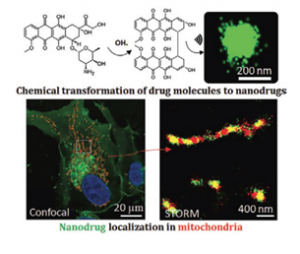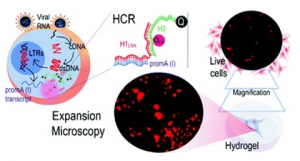International cooperation and European funding paved the way for successful scientific results at FNUSA-ICRC
Thanks to the contribution of the H2020, the EU’s research and innovation funding programme active from 2014-2020, the International Clinical Research Center (ICRC) has established a successful and long-term collaboration with colleagues from the University of Melbourne (UniMelb, Australia) and the University of Tor Vergata in Rome (Italy). The joint network was empowered by Marie Curie Research and Innovation Staff Exchange (RISE) grant NANOSUPREMI and coordinated by Dr. Giancarlo Forte at the Mechanobiology of Disease Group of FNUSA-ICRC, and Dr. Francesca Cavalieri who has a shared appointment at the University of Melbourne and at the University of Tor Vergata. By exploiting the possibility to exchange staff and transfer knowledge and by combining complementary expertise in the fields of nanomaterials and cellular biology, the collaboration has recently resulted in a number of outstanding peer-reviewed publications.
Earlier this year, the work entitled “Transforming the chemical structure and bio‐nano activity of doxorubicin by ultrasound for selective killing of cancer cells” has been published in the high impact factor journal Advanced Materials. In this study, Sukhvir Bhangu from UniMelb and Soraia Fernandes from FNUSA-ICRC aimed at increasing the specificity of cancer treatment. They adopted a simple and cost-effective methodology to reconfigure the structure of the chemotherapeutic drug doxorubicin to selectively kill cancer cells and avoid cardiotoxic effects.
Within the same collaboration and thanks also to the support of iCare2-AIRC funding scheme, Marco Cassani from FNUSA-ICRC and Alessia Amodio from UniMelb have described a new method based on DNA/LNA chimera sensor and expansion microscopy to identify virus-infected cells and their viral reservoir with unprecedented detection accuracy. Although this technique has been applied to HIV virus, it can be scaled up to identify cells infected by SARS-COV2 virus. The study, entitled “Nanoscale probing and imaging of HIV-1 RNA in cells with a chimeric LNA-DNA sensor” was published in the peer-reviewed journal Nanoscale.
Finally, in another publication, Agata Glab, a PhD student from the UniMelb hosted at CTM lab within the MSCA-RISE NANOSUPREMI grant, proposed the application of glycogen-albumin nanoparticles for drug deliver to cancer cells in 2D and 3D disease models. This study, entitled “Triggering the nanophase separation of albumin through multivalent binding to glycogen for drug delivery in 2D and 3D multicellular constructs”, is a fruit of the collaboration with the groups of Giancarlo Forte and Jan Frič, from CTM, and has been published in the journal Nanoscale.



